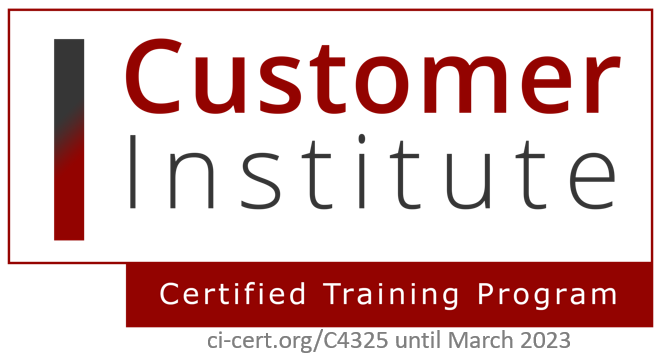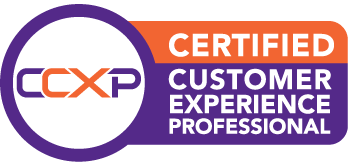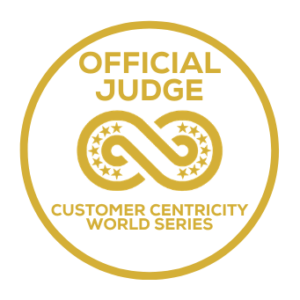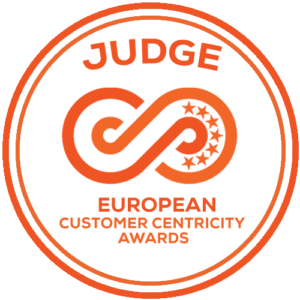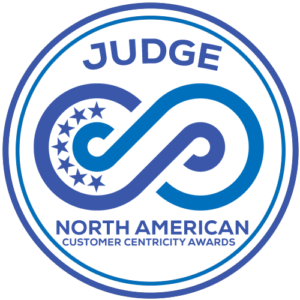About this series: I summarise answers to the most frequent and important questions that I saw coming up when it comes to the WHY, WHAT, WHEN, WHO, HOW and BUT of NPS (as Net Promoter System & Spirit, not just Net Promoter Score) so that you can create the program that most makes sense and brings value to your specific context & needs, and/or gradually expand it with new surveys, and surveying larger or different company segments.
In the two first post of this series we talked about:
– why of NPS: the goals served by using NPS methodology and
– what is NPS and what are the different NPS surveys (strategic, transactional, relational)
Today we dig deeper into deciding when to use NPS and with who.
At all times, the focus should be on your customer’s experience. NPS is a remarkably simple, but not necessarily the only tool or the best-suited tool to gauge your customer experience. So when to use NPS? And what to use when NPS is not suitable? In this article, we’ll provide you with arguments for making the right decisions.
1. When to use NPS with your customers?
To decide whether NPS is the correct methodology for the Customer Understanding you are looking to gain, you should be asking these five questions:
- Are you looking to collect customer data, where we define a customer as someone who has:
- either purchased something from you (in this case you can ask both an NPS brand question or an NPS Touchpoint question)
- either is a regular user of your product
- either has had a significant interaction with your company (i.e. through e-shop or service contact or relevant demo/sales visit)?
- Are you looking to collect customer data,
- on touchpoints which will be meaningful to your customers (i.e. is it worth for them to spend 2-3 minutes answering your survey?) and to your company (i.e. is it worth for you to invest time and resources into an NPS type of survey cycle?) and
- with sent/responses volumes that will be representative to make business decisions?
- Are you looking to understand what is the customer’s perception of the experience with your company and for insight into customer needs and desires and is in your case NPS methodology the most effective/efficient way to gain such insight? Two main elements to take into account in the decision whether/where to adopt NPS are:
- Volumes of customers and interactions you have and/or want to survey.
- Depth of insights you are looking to collect.
One thing I often see happening, especially in big companies, once an NPS program is started is that more people across countries/touchpoints/departments get highly engaged and starts wanting to use NPS:
- For every product/touchpoint, even one where there are maybe only few dozens to hundreds of interactions and/or customers (which may be best listened to differently, i.e. through one two one conversations and/or customer safaris or arena, depending on the insights needs).
- For everything, even in depth analysis which is the NPS methodology is not designed to be the best fit for (while instead an ethnography study could be)
There are many other methods to gather customer insights (i.e., ratings and reviews, social media listening, experiential observations, customer safari, focus groups, contact center logging, etc.), which we will cover in a separate post, and these are usually best used in combination with NPS surveys, each fulfilling a specific set on insight needs.
- Are you planning to act upon the survey results, i.e. to remove causes of detraction and identify how to convert passives into promoters and overall improve the experience you deliver?
- Are you planning to engage and follow-up directly with your customers, i.e. activating and rewarding promoters?If you have not answered all of these five questions with a YES, then you should consider if NPS is the right methodology for your needs and/or if the timing to start an NPS program in your organization is mature enough (this is especially the case when the answer is no on question 4 & 5).
2. When to use NPS on non-customers?
Because all the goals are designed around the experience that customers have with a company from who they bought something, NPS is not the best methodology for assessing non-customers, because it will not make sense for them to recommend something they have not used or purchased. In some situations the NPS type of question (but not the complete methodology) can be stretched and used, but with the caveat that results will be different, hence:
- they should be kept separately from results of actual customers
- they should be considered differently for driving business decisions
Examples of these situations are surveys of:
- “Customers” who have used the product without having purchased it (i.e. free tester) => in this case, the NPS results will be different (usually higher) because the “value for money” element will not play a role in the customer consideration
- “Prospects” after a significant demo and/or sales visits in a B2B process
- “Non-customer” who visited the company shop or e-shop but left without purchasing =>. In this case, the NPS results will be different (usually lower) because the customer hasn’t been able to complete the transaction. Of course, you want to find out why, but NPS type of question is simply not the best kind of question for this case.
When you concluded NPS is the right measurement, you need to identify WHO to survey:
- role in purchasing process
- volumes (sample size) you need to survey (for statistical representability) and you can survey (to be able to do follow-up)
- experiencing self versus remembering self
3. Who to survey
We have already covered the difference between customers and non-customers. The other key element, especially in B2B, is the role different people play in the decision process. We usually distinguish:
– Buyer: the person who actually buys and pays
– Decision maker: the person who ultimately decides what to buy
– Influencers: anyone who has a saying in the final decision and/or capability to influence it
– Users: the people who will use the product
Check this simple example from two very different contexts:
Once you have identified who to survey, you need to determine:
- a) How/when can you survey each of these various roles? Do you have enough contact details for them and/or how you are going to get them?
- b) Which volumes do you need to survey to have a statistically representative sample and big enough to make decisions, considering likely response rates (i.e. 20 to 30% on transactional touchpoints and 10-15% on relational touchpoints). This is very dependent on your particular situation and context. Here is a quick online tool to calculate your needed sample from a quantitative point of view. From a qualitative perspective, in my experience, I have seen that I need about 200-300 comments (customer verbatims) to reach saturation when it comes to patterns and insights. A lot has been written already on sample size, so here I just reference 3 of my favourite articles on the topic:
- a. How to determine population and survey sample size?
- b. Determining Sample Size: How to Ensure You Get the Correct Sample Size
- c. Does having a statistically significant sample size matter?
- d. Survey Random Sample Calculator
- c) Which volumes can you survey (i.e. how many client companies do you have for your software and how many users?) to still be able to do action follow-up with each customer if they require so.If your goal is to gain insight, you don’t need to survey every single customer. If your goal is engagement, survey the customers you can follow up with. Just calculate how many answers you want and based on expected responses rate work backward in which timeline and volume you should be sending out the surveys.
4. When to survey during/after the experience? OR When in the experience to ask NPS?
When you concluded NPS is the right measurement and you have identified WHO to survey, you need to go back again to determine when exactly to survey.
What customers experience is not always what they remember!
Happiness is perceived very differently by two selves that we all hold: our “experiencing self” and our “remembering self.” As behavioural economist Daniel Kahneman, explains “Your experiencing self is always there, living moment by moment. It is most happy spending time with people you like. But the remembering self is a storyteller, weaving a narrative of significant events. It is most happy looking back at highlights”.
This matters because the remembering self controls decision making and long term word of mouth, whether positive or negative. “We don’t choose between experiences; we choose between memories of experiences,” Kahneman notes.
Short term word of mouth – the venting or celebrating shouting we do shortly after the experience and on very open and public places like social media- it’s at its strongest immediately after the experience.
In other words: consumers’ experiences are just as important as consumers’ reflections on their experiences. Hence brands need to think about both the experiencing self and the remembering self. And they need to have in place an NPS measurement that provides a balanced view across both:
– The experiencing self: this is best measured in transactional surveys which are then sent immediately or shortly after the event. If we send a transactional survey a week after the interaction (whether because of system limitations to get timely data from CRM or whether because we want to measure also delivery) then we need to consider that we will measure a hybrid between experiencing self and remembering self.
– The remembering self: this is mostly measured thanks to yearly or quarterly relational surveys
Conclusion
The NPS question may seem a simple one: “In a scale from 0 to 10 how likely are you to recommend [brand, product, company, service] to your friends”. However, the reliability of the results stem from a careful balance of the elements in question: the insights we aim to collect, at which point in the experience are we posing the question and to whom.
Determining these three elements requires that you are very clear on what you are measuring as it will generate different results which need to be read taking into account the entire context.
In the previous releases we discussed why, what, which survey and for which purpose to use NPS as measurement. You now know who and when to survey.
Through the different types and building blocks of NPS measurement, you can create the program that most makes sense and brings value to your specific context & needs, and/or gradually expand it with new surveys, and surveying larger or different company segments.
In the upcoming deliveries we will talk about
- “How of NPS” (how to work the question, how to get started, how to embed and how to keep it running)
- “But of NPS” (what are the pitfalls of Net Promoter Score and System and to which extent the Net Promoter System addresses them)
NB> Our friends at Satmetrix want us to remind you that Net Promoter, NPS, and Net Promoter Score are trademarks of Satmetrix Systems, Inc., Bain & Company, and Fred Reichheld.
More on Net Promoter Score
- Missed the previous deliveries in this series? No problem! Read here “Why NPS as measurement & methodology” and “Which goals does it serve”?
- Make sure everybody in your company is familiar with 10 key things to know about NPS
- We all aim for enthusiast clients. How turn passives to promoters? The answer is Maslow & NPS
- Are you looking for Customer Experience Excellence? Implement the NPS & CEXP Household Framework
Sign up to receive a notification when new releases in this series are published (“How of NPS” and “But of NPS” will follow shortly)
Setting up an NPS program?
Speed up the adoption of NPS in your organisation by taking the NPS Onboarding Masterclass, a two-day full immersion training that combines high quality content, peer exchange and blended learning. This in-company training is designed by Rosaria Cirillo Certified Customer Experience Professional (CCXP) & Authorised Resource Trainer (ART) by CXPA, and will provide your organisation with in depth learning, exercises and case studies related to the seven critical elements pivotal to the success of this program. Interested?



 A (little Italian) sunshine of energy, enthusiasm, and passion, with a mission to bring more happiness in the world one interaction at the time, the business world being my chosen playground!
I inspire and empower conscious leaders to nurture their happiness (moving from depleting to enriching emotions) and to move from depleting to enriching experiences, choosing, designing, and delivering WOW life-enriching interactions that contribute to everyone’s HAPPINESS, so they can achieve business and personal prosperity, making happiness their competitive advantage
A (little Italian) sunshine of energy, enthusiasm, and passion, with a mission to bring more happiness in the world one interaction at the time, the business world being my chosen playground!
I inspire and empower conscious leaders to nurture their happiness (moving from depleting to enriching emotions) and to move from depleting to enriching experiences, choosing, designing, and delivering WOW life-enriching interactions that contribute to everyone’s HAPPINESS, so they can achieve business and personal prosperity, making happiness their competitive advantage 